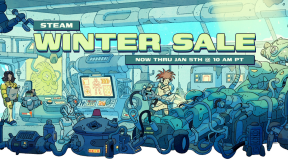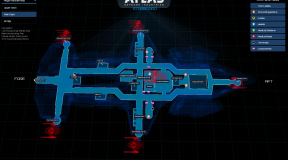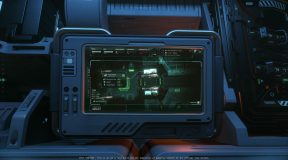Round 3 was a bit of a bummer. Most every game on this slate was a builder; some were overly simplistic in both design and effect, while a few were slick and involved. If I had to tilt the see-saw in one direction or another, it would be slightly tipped in favor of the good, but that’s still…not entirely good.
Citadelum
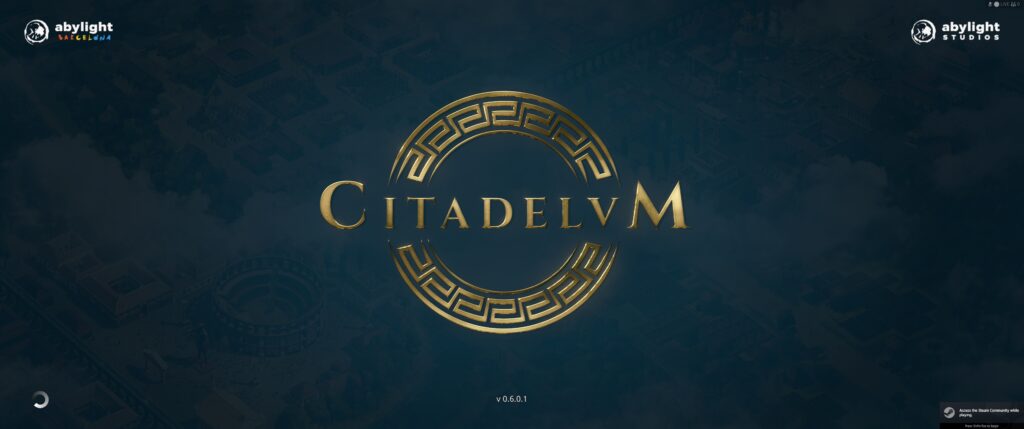
When my wife and I were dating, we would sit in front of the computer and play Caesar III. To this day, CIII is my benchmark for quality city-builders. Many modern builders can trade a lineage back to the Caesar series (and Pharoah, of course) but they also try and put their own spin on things which can be hit or miss for me. Although we can get Caesar III through GOG, and while it will run on modern hardware, the old adage “you can’t go back again” is absolutely true. So instead, there’s Citadelum.
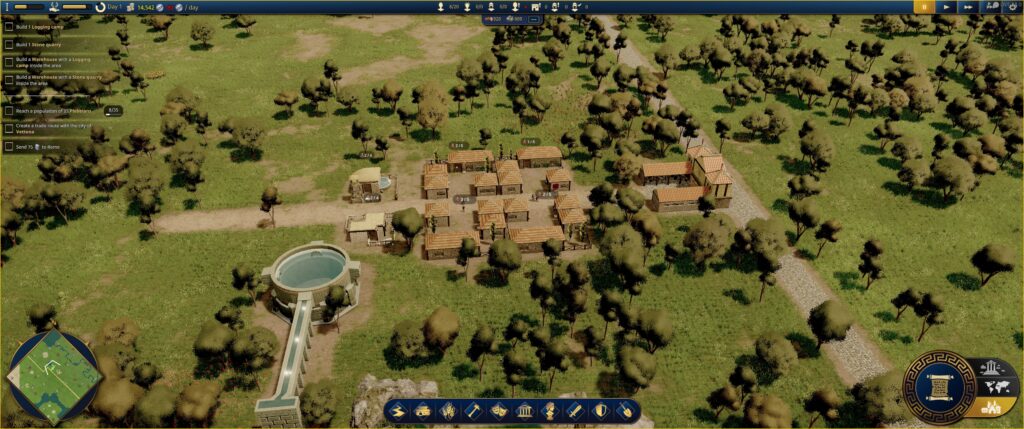
I’m not saying that Citadelum is a 1:1 clone of Caesar III with improved graphics, but I’m not not saying that Citadelum is a 1:1 clone of Caesar III with improved graphics. After a few tutorial explanations, I felt comfortable turning off the hints and relying on my memories of old, and found that the same strategies learned from CIII worked exactly the same in Citadelum.
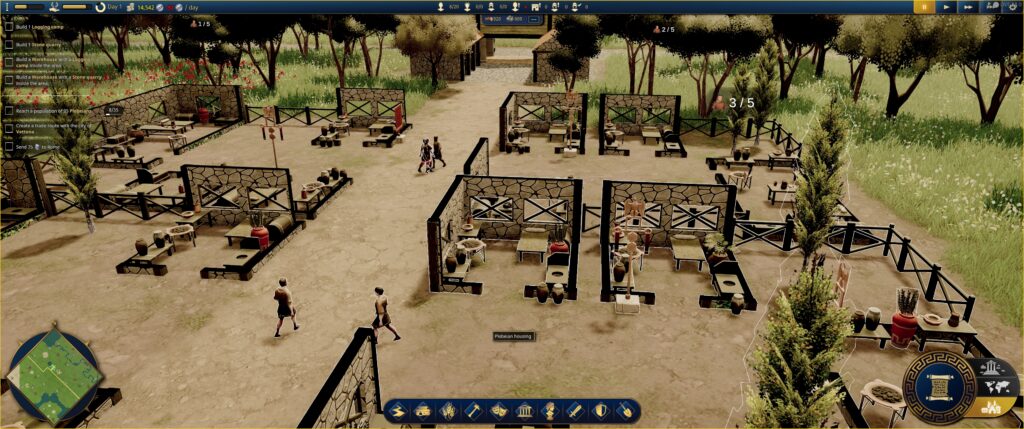
I didn’t spend a whole lot of time with this one since I knew pretty much exactly what I was working with, so I don’t know if there are any enhancements to this stalwart formula, and depending on the price I might pick this one up when it launches. If nothing else, it’s a familiar friend, and sometimes that’s all you need in a game.
Republic of Pirates
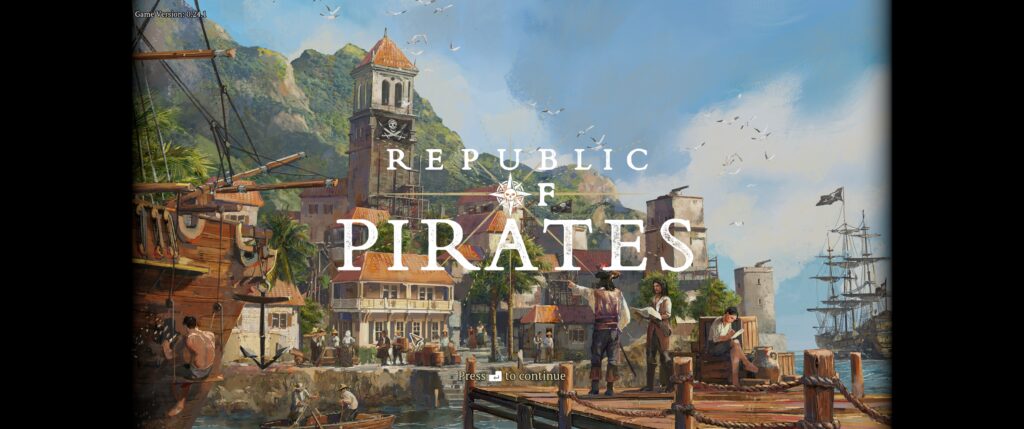
No I will not flavor this discussion with pirate jargon, but if you are a fan of “traditional piracy” flavor and like city-builders (especially in the Anno vein) then you should absolutely check this one out.
The demo starts with you, the player, bemoaning the state of modern pirate unions after your father, a pirate himself, was assassinated by greedy alliance of other pirates. You know, pirate stuff. With nothing but a small ship and some dreams of revenge, you set off to found a new pirate nation.
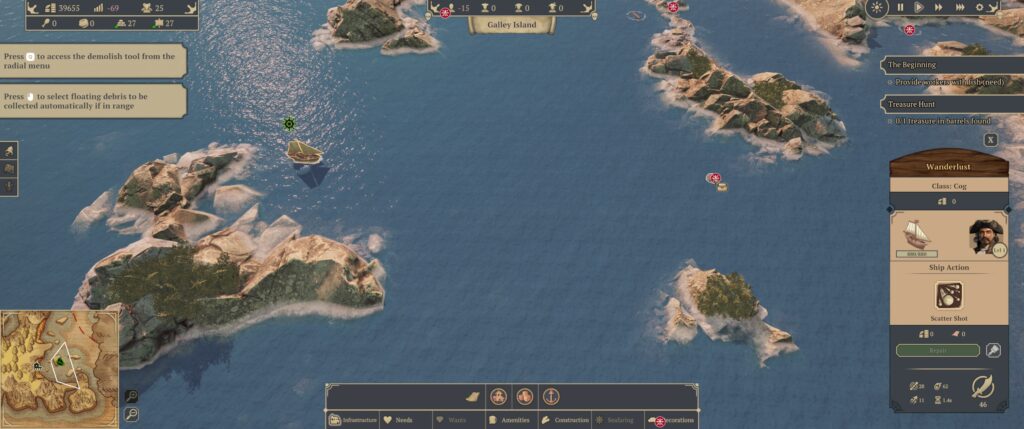
The initial steps had me learning to navigate my ship, but if you’re looking for a technical study in sailing, this is not it. All I had to do was click on a location and my ship turned on a doubloon and sailed to that point. Along the way, I could collect resources from debris in the water, earning wood and cash to fund my pirate start-up.
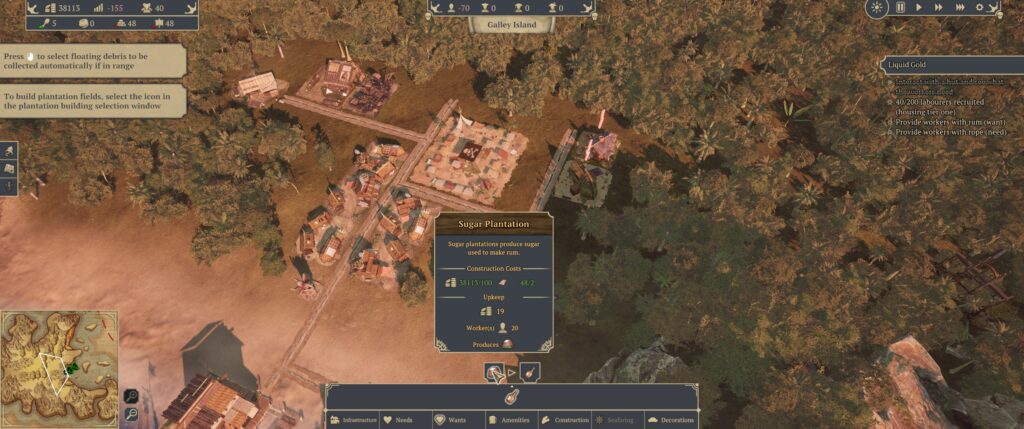
Then I was quickly moved to an island in my covert archipelago where I started building. There was nothing terribly awe-inspiring about this process. I had to build huts, markets, and a fishing wharf. To grow my pops I had to fulfill needs (food) and wants (rope for sales, rum, and brothels, because there’s nothing like a good pirate stereotype to get you by). Building was standard: pick a building from an unlocked blueprint and slap it down. The good news is that building was instant; no having to wait for animated pixels to drag resources from place to place so as long as I had the resources, the building got built as soon as I placed it. Some of the buildings had areas of influence, which meant that placement was crucial so that all citizens were served.
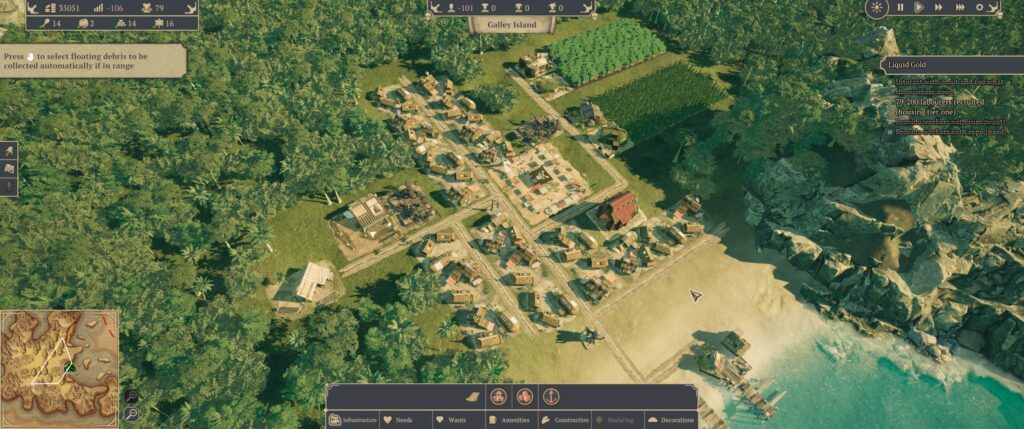
As soon as I ticked off all of the tutorial tasks, some raiders entered my port. Thankfully I had earned the support of another pirate in a larger ship, so she and I went into combat mode. Here, you can look at a tactical map which displays your forces and the enemy forces. While ships can be controlled this way, returning to the normal view allows for individual ship command. I got a bit confused at this point, unsure if my ships were auto-attacking or whatnot, so I clicked the larger ship and manually fired a volley, and saw it unload on one of the enemies. Oops. I guess I should have done that sooner.
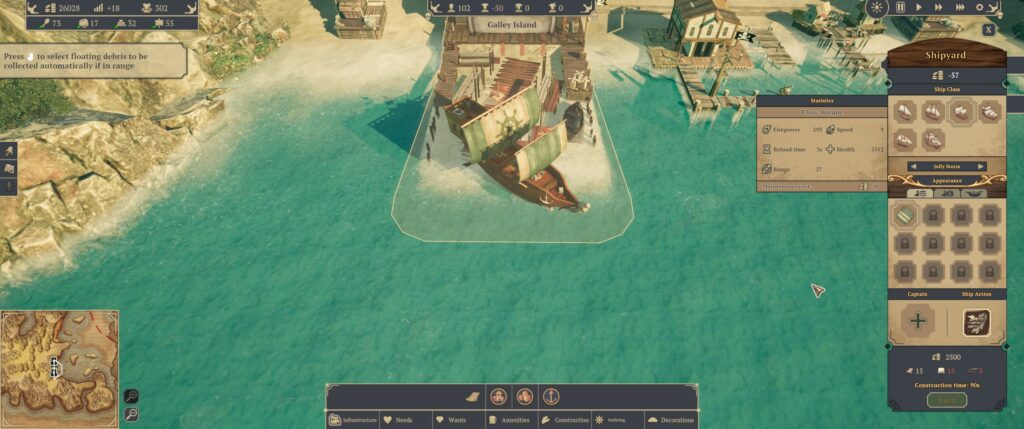
After more building and more encounters which — spoiler alert — destroyed my ships in the name of advancing the story, I had to build a shipyard. Here, I could create whatever types of ships I had materials for, specifying the name, shapes, flag decals, and colors. I would have to assign a captain as well, but that required that I have a “Captain’s Inn” built, which I did not have.
Republic of Pirates is a good looking, good playing builder game with a pirate flavor and the added benefit of being able to fight on the High Seas. The only issue I ran into was that in following the tutorial, I built too fast; I had more advanced tasks than I had ability or pops to harvest resources for, so I spent some time sitting around doing nothing for a rather long spell. Aside from my own dumb mistakes, Republic of Pirates gets a thumbs up from me. I’m not a massive “traditional pirate” fan, but being able to take a fleet out and about to collect random debris spawns while resource networks are getting their act together is a nice to-have to break up the act of building.
Node Farm
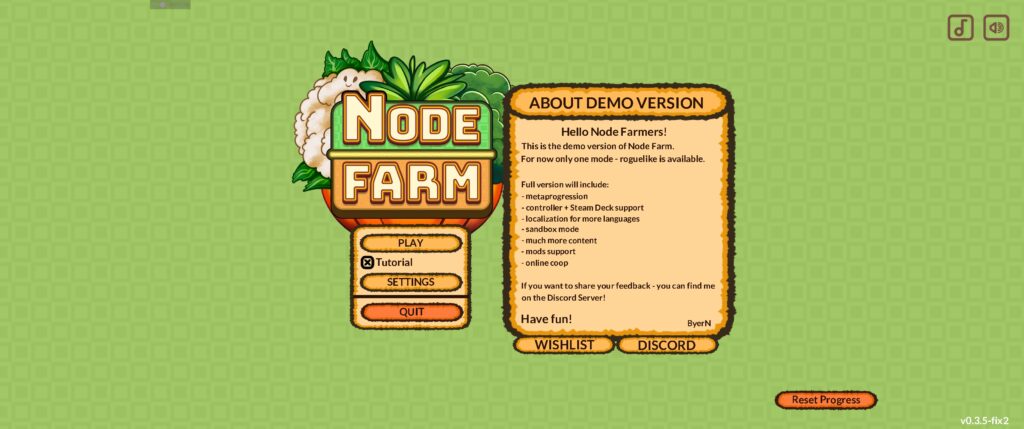
I had once played a demo for a game called Masterplan Tycoon which boiled down commerce to a series of nodes that operated based on placement and connections. I’d compare it to something like Satisfactory except all of the interesting tasks were abstracted down to individual blocks representing a source, a storage area, a consumer, or a market. I enjoyed that demo for its simplicity alone, and since Node Farm looks a lot like Masterplan Tycoon, I thought I’d give it a shot.
The simplistic presentation means I don’t really know what to say about this demo. It delivers on the promise of KISS: I started with a farmer node, connected to a water node. The farmer node connected to a crop node, and also to a marketplace node. Once a node has been placed and connected to its requirements, things start flowing and money is generated. More money means more farmer, water, and crop nodes. Eventually I could buy a new island which was better suited for a different crop. I could join the islands by roads, and once I had more than one crop I could sell the produce on the “Veggie Stock” Market. 10 points to Gryffindor for that one.
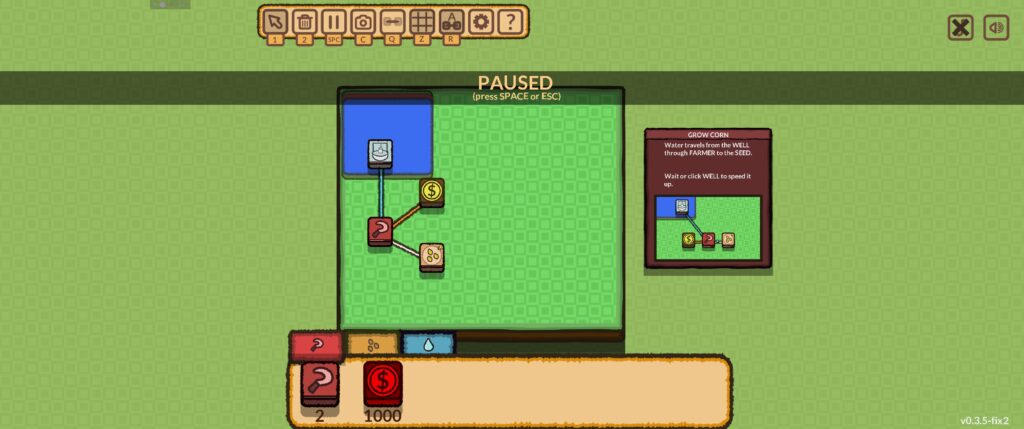
I guess this one is OK. The blocky, almost hand-drawn aesthetic is cute, and the mechanics seemed sound, although I wasn’t sure if my second island needed to be touching the first island so I could work them both into the network (I think it did, which of course means I left a gap between them). Ultimately this seems like just a “numbers go up” simulator, although like the excellent resource management game Slipways, connections cannot cross one another, making placement critical to minimize spend and maximize network flow (nodes can be moved without penalty, though).
Mini Settlers
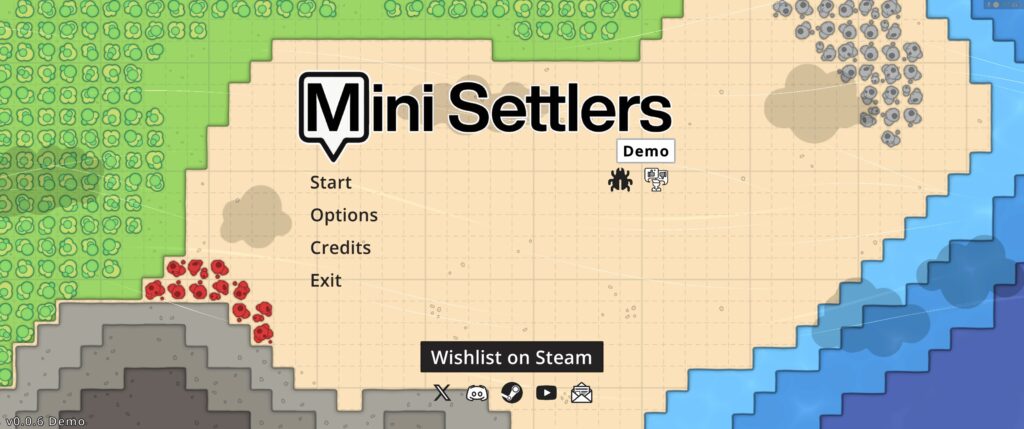
Right after I found Node Farm, I saw Mini Settlers, another minimalist resource network builder. Unfortunately this one pissed me off and I didn’t get to spend much time with it.
Like Node Farm, this game has us placing nodes representing operations like water gathering, harvesting, production, and storage. I placed the initial set of nodes, but when it came time to connect them via “roads”, the explanation and tutorial steps were woefully unclear. At one point, I tried connecting nodes only to be told that my roads were too short. The problem was that when drawing roads, they always seemed to have a max-traversal length before they just…stopped drawing. That meant I had to create an intermediate “anchor” in order to start a new segment and continue the road, but no matter where I put the anchor, the road always stopped drawing at exactly the same point. I could not come up with a configuration that allowed me to do what the tutorial wanted me to do, so I quit. Hard pass from me, Bob.
Ark of Charon
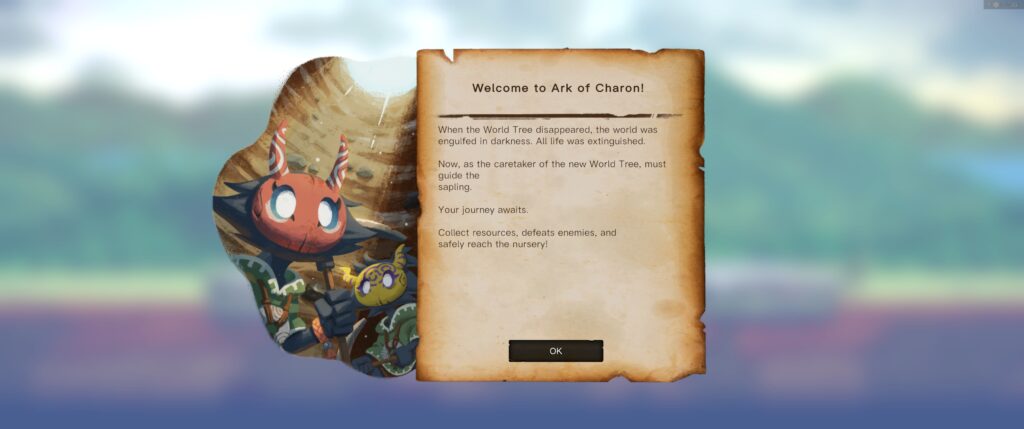
Surprise! Another builder. This was not intentional folks; there seem to be a lot of builders in the Fest, and out of all the genres on offer, this one naturally appeals to me the most.
Also surprise! Ark of Charon focuses on building on the back of a massive creature, although this is more like Wandering Village in that the creature is the last hope for survival in a world best by a growing plague that your settlement is trying to outrun. The settlers I had to command lived Terraria-slash-Oxygen Not Included style, that 2D side-view that always features depth mechanics, but which I always find really difficult to work with.
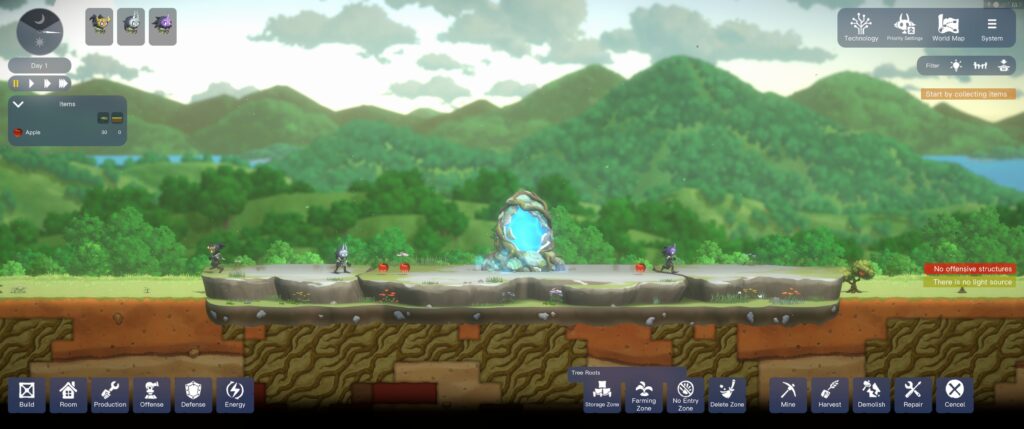
The demo starts off with three settlers, some food resources in the form of apples, and several saplings that will grow into much larger trees over time. My buildable space was limited to a rocky outcropping, and the first order of business told me to “start by collecting items”.
How, though? I tried clicking on the settlers, clicking on the apples, and dragging out a storage zone, but nothing happened. My settlers had the zoomies, running from one side of the screen to the other but didn’t stop to collect anything. I couldn’t build a room because I had to resources, because the goddamn refugees wouldn’t do any work. There were no tutorial or instruction popups, and since none of the actions offered worked towards the mandate to “collect items”, I rage quit this one too.
Next on Next Fest
This ends my initial crop of demos. There were some obvious winners and some painfully obvious losers here, but remember: these posts solely represent my opinion. While my goal was distinctly not to plow through these demos as fast as possible, first impressions matter, even or especially when making an unfinished product available as “a demo”. I spent a generous amount of times with the demos I enjoyed or which worked, and put aside ones I did not enjoy or which were simply unclear about mechanics. That’s kind of the benefit of demos: we can kick tires and then make informed decisions about where to put our money, which is probably why I enjoy the Next Fest so much.


